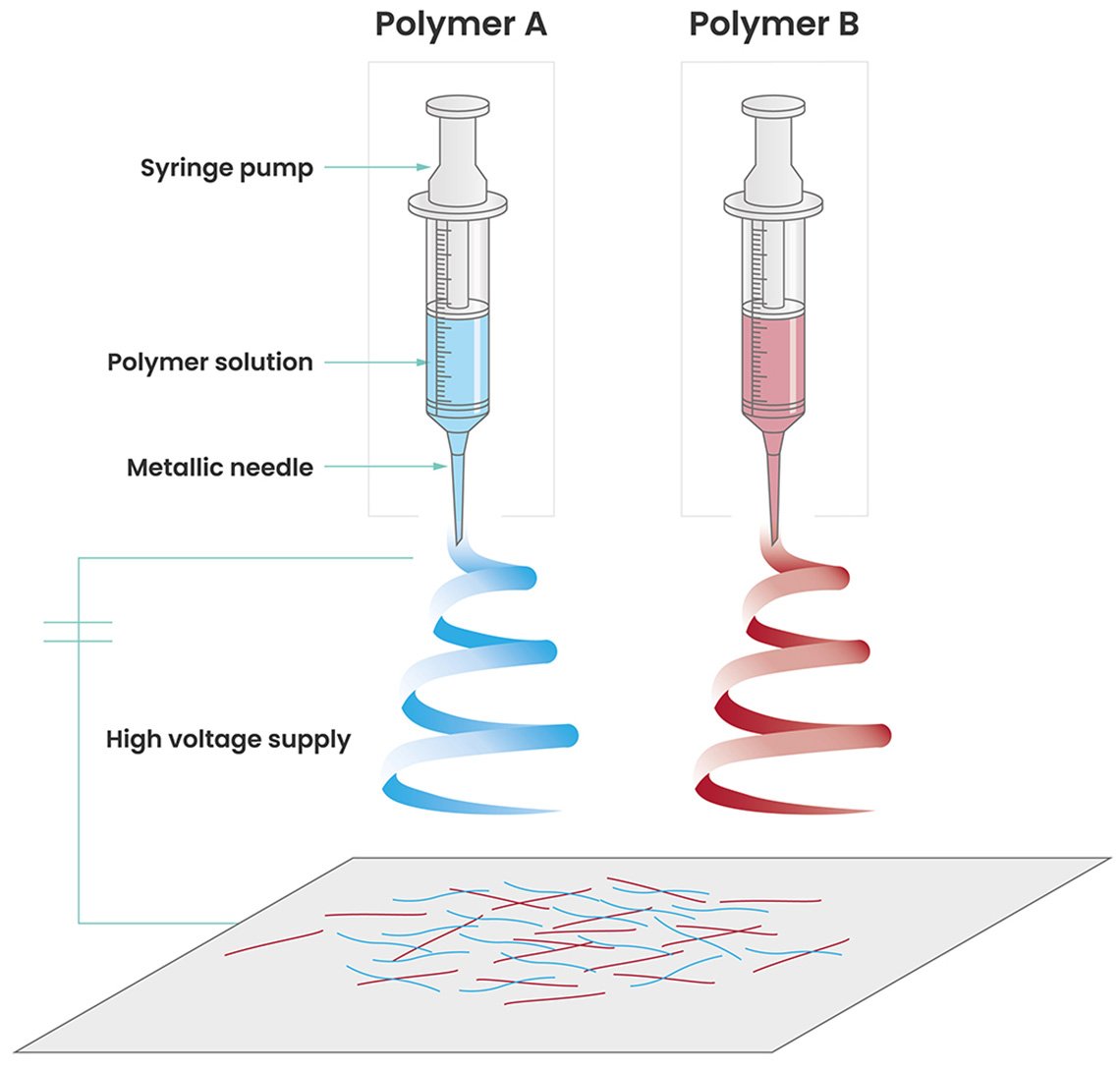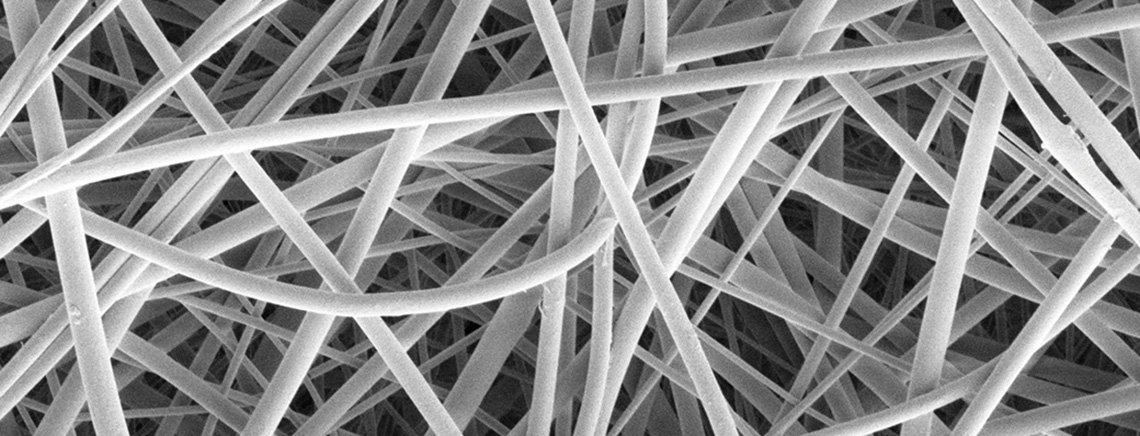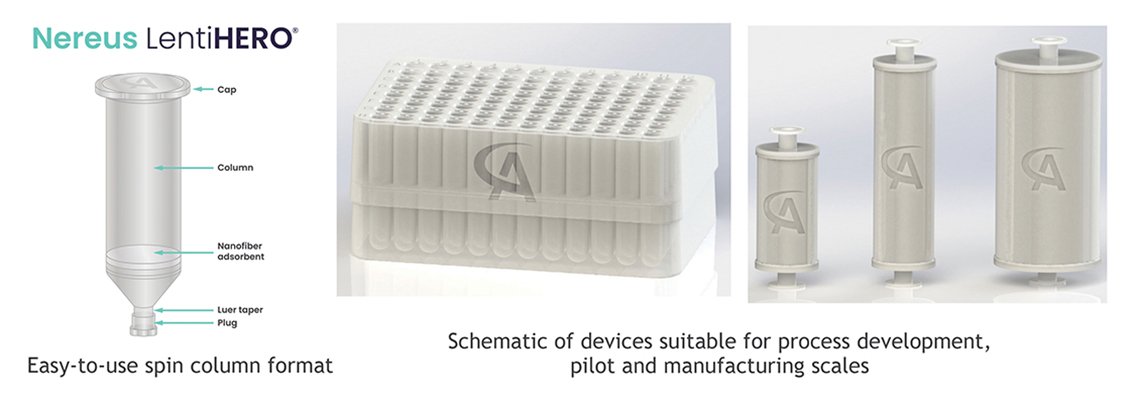AstreAdept®: Nanofiber based Cell and Gene Therapy Purification Technology
Published date: 12 December 2023
As cell and gene therapies become more accessible, new approaches are required to ensure the purity and volume of these novel therapeutics. Through development of an unprecedented and proprietary nanofiber-based technology, we’re able to empower therapeutic innovators with the tools they need to purify the quantities they desire, AstreAdept® can be used to change how bioprocessing for CGT is approached.
How is AstreAdept® produced?
The nanofiber matrix is created by electrospinning a blend of two different polymers together, combing cellulosic and non-cellulosic materials, figure 1 shows how this composite nanofiber structure is made. Two polymeric solutions are fed through a metallic needle under an applied voltage. Both polymer nanofibers are deposited onto the same substrate material in sequential layers forming a composite membrane.

Figure 1. Schematic of the production of composite Nanofiber
What is the structure of AstreAdept®?
The nano dimensions give it a high surface-area-to-volume ratio, this characteristic makes it very attractive for applications in which large surface areas are highly desirable, such as in affinity membranes.
Figure 2 shows a Scanning Electron Microscopy (SEM) photo of the composite nanofiber membrane, illustrating the nanofiber’s high surface-area-to-volume ratio and improved permeability. Those characteristics provide a large accessible binding surface area, with potential for high flow rates.

Figure 2. SEM of composite Nanofiber membrane
Are there any economic or environmental benefits to AstreAdept®?
The unique advantages offered by the AstreAdept® nanofiber will affect other areas of biomanufacturing. Higher recovery reduces pressure to expand upstream production, increasing productivity, with improved capacity and faster process runs, bioprocessing equipment size can be minimized, resulting in positive effects on process economics. In addition, devices housing this material have smaller physical footprints, which reduce facility use, water use, and waste removal. Creating a greener manufacturing process.
What does the future look like for AstreAdept®?
While the Nereus LentiHERO® spin column is the first product in a family of next generation purification devices designed to leverage the properties of AstreAdept® nanofiber chromatography, development of further devices is underway for process development, pilot, and manufacturing scales. Figure 3 shows AstreAdept® in its existing format (lab-scale spin column) along with proposed formats at larger scales for additional cell and gene therapy applications.

Figure 3. Scale up

